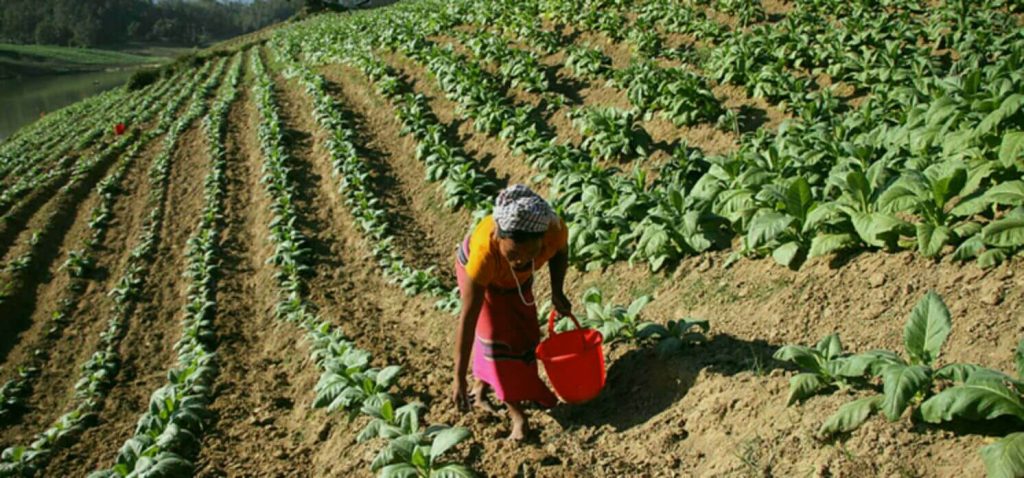
The realm of tobacco cultivation unfolds with mesmerizing diversity, and Argentina emerges as a unique protagonist within this enchanting tapestry. The country’s bountiful soil, favorable climate, and centuries-old farming traditions have elevated it to a prominent role in the global tobacco industry. Yet, what lies beneath the surface of growing tobacco in Argentina? What distinct facets shape this process and contribute to the unparalleled flavor and quality of Argentine tobacco?
Unraveling the secrets of growing tobacco in Argentina reveals an agricultural endeavor of profound significance. The nation’s prowess in cultivating high-quality tobacco shines, particularly in the provinces of Misiones and Corrientes. This intricate process encompasses various stages, from seedling production to field planting, harvesting, and curing. While traditional farming methods remain integral to Argentina’s tobacco industry, there is a growing inclination towards embracing modern technology and sustainable agricultural practices[ 1 ][ 2 ][ 3 ].
An Immersive Encounter with the Argentine Tobacco Industry
The Argentine tobacco industry stands as a formidable pillar of the country’s economy. In the bountiful harvest of 2003-2004, a staggering 157,294 tonnes of tobacco were produced, with an astounding 93,327 tonnes destined for exportation. The planted area stretched across 831.75 km², with 776 km² ultimately harvested.
The Key Players Shaping the Argentine Tobacco Industry
Dominating the industry are two transnational behemoths: Massalin Particulares S.A., a subsidiary of Philip Morris International, and Nobleza Piccardo, a subsidiary of British American Tobacco. These industry giants boast internationally recognized brands such as Marlboro, Lucky Strike, Viceroy, Camel, alongside national treasures like Jockey and Derby.
The Geographical Landscape of Tobacco Production
The tapestry of tobacco producers unfolds predominantly in the country’s northern expanse. The provinces of Jujuy and Salta in the northwest, along with Misiones in the northeastern Mesopotamia, emerge as paramount producers, each contributing over 45,000 tonnes annually. Other tobacco-rich provinces include Tucuman, Corrientes, Chaco, and Catamarca.
The Far-Reaching Economic Impact of Tobacco in Argentina
The significance of tobacco transcends agricultural realms, extending profound economic implications to the producing regions, which are often characterized by comparative poverty. Employing a staggering 500,000 individuals, the Argentine tobacco industry witnesses half of its workforce directly involved in planting and harvesting activities. Merely 2% are engaged in manufacturing derived products, with the remaining workforce dedicated to distribution and sales.
Seeding the Journey: The Planting Stage
The grand odyssey of growing tobacco in Argentina commences with the planting stage, an endeavor entailing meticulous soil preparation and the delicate sowing of tobacco seeds. Typically, these seeds find solace in the sheltered embrace of greenhouses before gracefully transitioning to their destined fields.
A Symphony of Growth: The Maturation Stage
Once the seedlings achieve adequate strength, they embark on their transformative journey to the open fields. Here, they receive unwavering care and attention, basking in the sunlight and embracing optimal growth. These pampered seedlings indulge in regular watering, accompanied by vigilant guardianship against the perils of pests and diseases.
The Harvest’s Joy: Reaping the Rewards
As the tobacco leaves reach the pinnacle of maturation, the moment of harvest arises. This labor-intensive endeavor demands unwavering precision, ensuring the delicate leaves remain unblemished, unfurling the true essence of their potential.
A Tale of Transformation: The Curing Ritual
The journey of Argentine tobacco leaps forward with the arrival of the curing stage. This ethereal dance entails the delicate art of drying the leaves, tenderly evicting moisture while ushering forth the flavors that crown Argentine tobacco with its inimitable charm.
Nurturing the Future: The Tobacco Special Fund (FET)
Despite the health concerns linked to smoking, the Argentine government extends its unwavering support to the tobacco industry through the nurturing embrace of the Tobacco Special Fund (FET). This dedicated fund bestows subsidies and facilitates access to credit, bolstering endeavors to modernize the industry and propel it towards a sustainable future.
A Path to Illumination: Labor Practices
Labor practices stand as an ever-present challenge within the Argentine tobacco industry. Regrettably, a substantial portion of the industry’s workforce comprises underage laborers. Despite ongoing efforts to implement educational programs, the specter of child labor continues to cast its shadow, demanding resolute attention and concerted actions.
Epilogue
Unveiling the mystique of growing tobacco in Argentina exposes a multifaceted process interwoven with numerous stages, from planting to curing. The industry’s profound impact reverberates through the country’s economy, empowering half a million individuals with employment opportunities. As we forge ahead, surmounting the challenges that lie before us is crucial to ensuring the enduring sustainability and evolution of the Argentine tobacco industry.
Statistics:
Argentina stands tall as one of the premier tobacco-producing nations globally. The country yields a remarkable annual output of approximately 60,000 to 75,000 tons of tobacco. The provinces of Misiones and Corrientes claim dominion over 80% of the country’s total tobacco production. The Argentine tobacco industry serves as a vibrant source of employment, contributing significantly to the local economy[ 4 ][ 5 ].
FAQs:
- What types of tobacco are cultivated in Argentina?
- Argentina proudly cultivates an array of tobacco varieties, encompassing Virginia, Burley, and Oriental types.
- Where are the primary tobacco-growing regions in Argentina?
- The agricultural splendor of tobacco unfurls predominantly within the provinces of Misiones and Corrientes.
- What constitutes the process of tobacco cultivation in Argentina?
- Tobacco cultivation in Argentina entails a comprehensive journey, encompassing seedling production, field planting, harvesting, and curing.
- What characterizes the scale of tobacco farming in Argentina?
- The Argentine tobacco industry is marked by the presence of small-scale farmers, with an emerging inclination towards the integration of modern technology and sustainable agricultural practices.
- What is the annual tobacco production in Argentina?
- Argentina proudly contributes an annual yield of approximately 60,000 to 75,000 tons of tobacco.
Books:
- “Agriculture in Argentina: A General Review and Description of Its Principal Products”
- “The Economics of Tobacco Farming in Argentina”
Sources of information:
- FAO – Tobacco in Argentina https:books.google.com/books?id=1Q1FAAAAYAAJ
- INTA – La produccion de tabaco en Argentina https://www.inta.gob.ar/documentos/la-produccion-de-tabaco-en-argentina
- ResearchGate – Tobacco cultivation in Argentina https://www.researchgate.net/publication/228345914_Tobacco_cultivation_in_Argentina